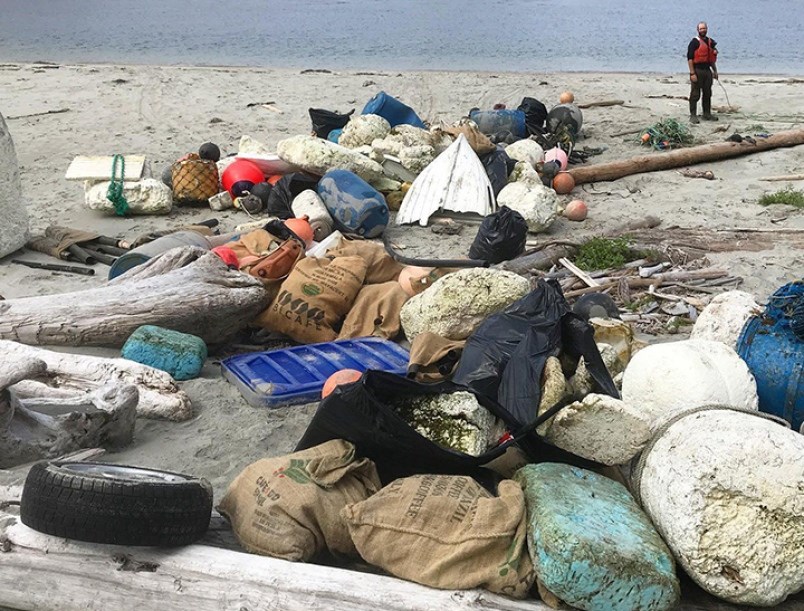B.C.'s coast will get a solid cleanup, with the help of First Nations.
The province has awarded $1.33 million to the Coastal First Nations-Great Bear Initiative to carry out the work under the Clean Coast, Clean Waters Initiative Fund. It’s part of a pandemic response and job creation strategy.
“It’s important because you have to come to see with your own eyes how much marine debris is compiled on the outer shores of the coast. It’s actually astonishing to see how much debris there is,” said William Housty, resource management department chair for the Heiltsuk First Nation of Bella Bella. It’s one of the nine Indigenous communities represented by the initiative.
The other First Nations involved are the Wuikinuxv, Kitasoo/Xaixais, Nuxalk, Gitga’at, Metlakatla, Old Massett, Skidegate, and Council of the Haida Nation.
“There’s actually lots of heavy plastic and abandoned fishing nets that have drifted in, and there’s still lots of debris out there from the tsunami several years ago in Japan,” Housty said, adding that other materials often found are pieces of garbage that have been blown off vessels in the wind, or items they’ve intentionally littered overboard, as well as fishing buoys, old nets, and remnants of small vessels that have been abandoned or sunk, among other things. Some of the items he’s seen have had Japanese symbols on them, which is why he and other crew members think they may have come from that far away.
This is the second round of funding under the Clean Coast, Clean Waters initiative. The first round went to small ship tour operators, and the Wilderness Tourism Association.
Overall, 3,500 km of shoreline will be patrolled by crews, with 200 km of that identified as garbage hotspots to be cleaned thoroughly.
At least 50 jobs will be created within the First Nations communities.
“It’s providing a good short-term opportunity for community members and all the communities on the coast to have the opportunity to make a little bit of money for their pockets and their families, and it’s provided a good opportunity to have some relief from the tough times we’ve all been going through with COVID,” said Housty.
In Bella Bella, it’s even become a youth work opportunity, as well, he said.
“I was just down there ... seeing the crew off, and they have three youth that are on the project. Not only are they part of the clean up, but they’re also mentoring with some of the skippers on the boat, and learning a bit about the territories and navigating,” said Housty.
The areas identified by the Nations will be in large part key areas for traditional food harvesting. Examples of these foods are seaweed, mussels, barnacles, salmon, herring, herring eggs, abalone, and crabs, said Housty.


